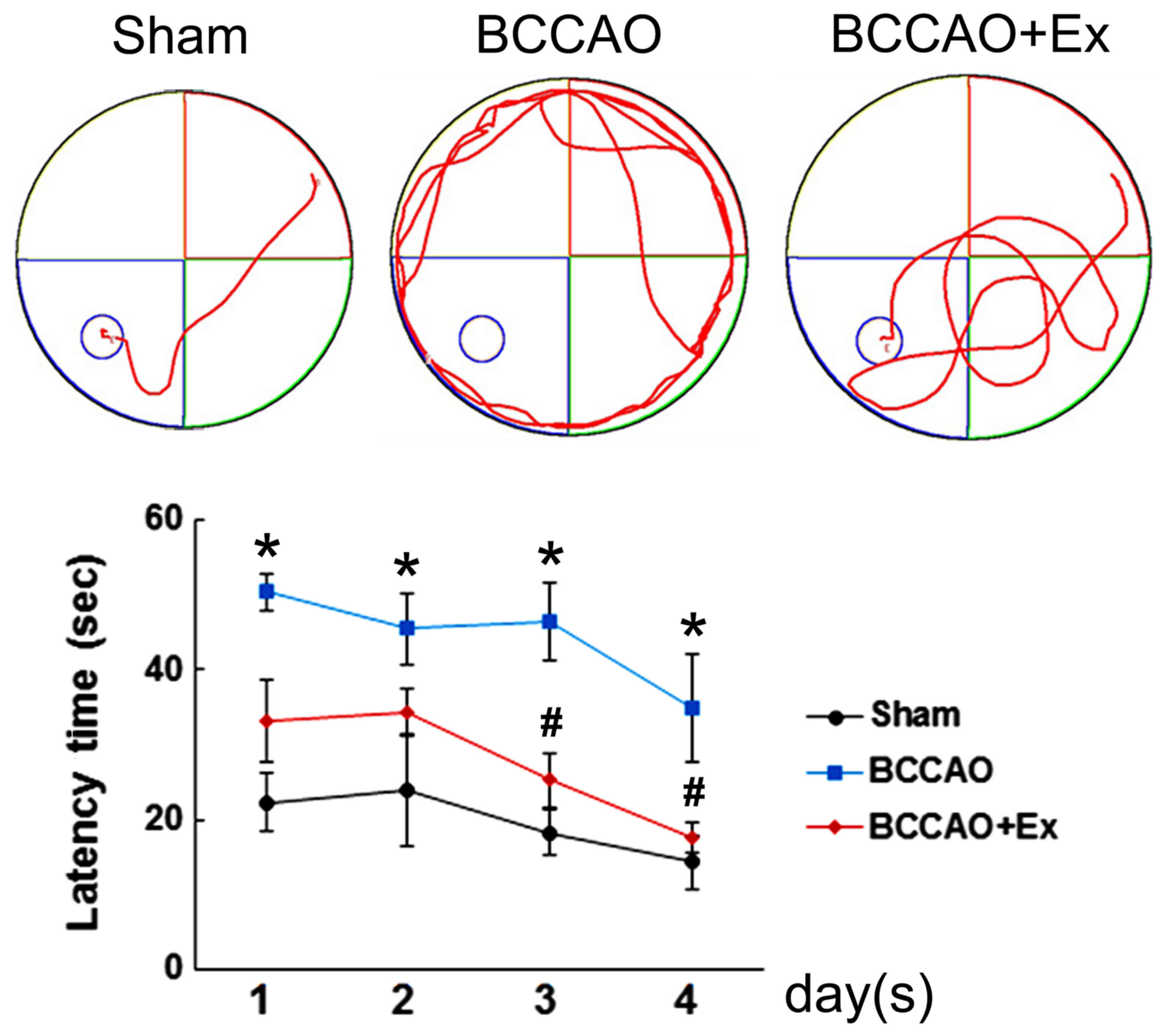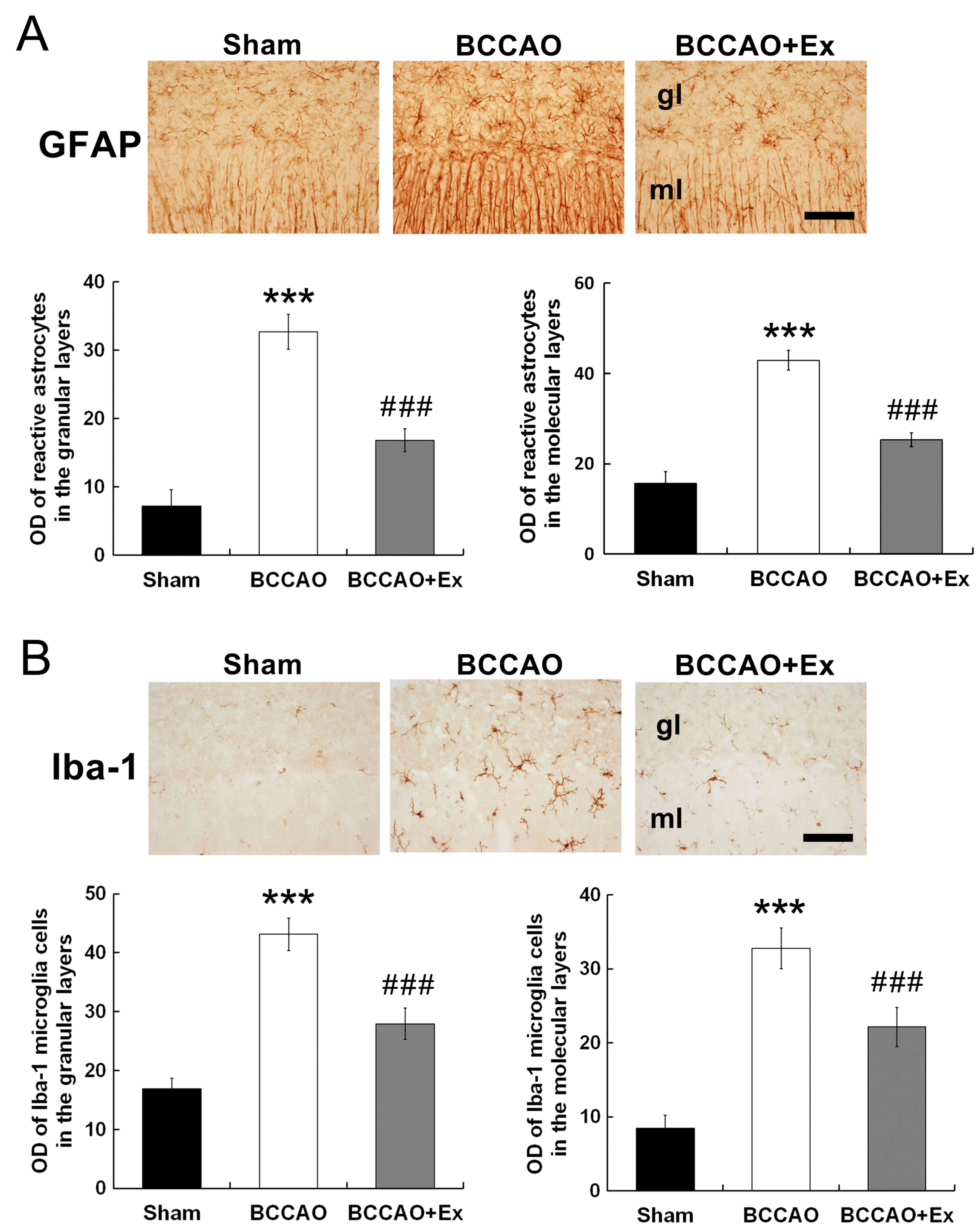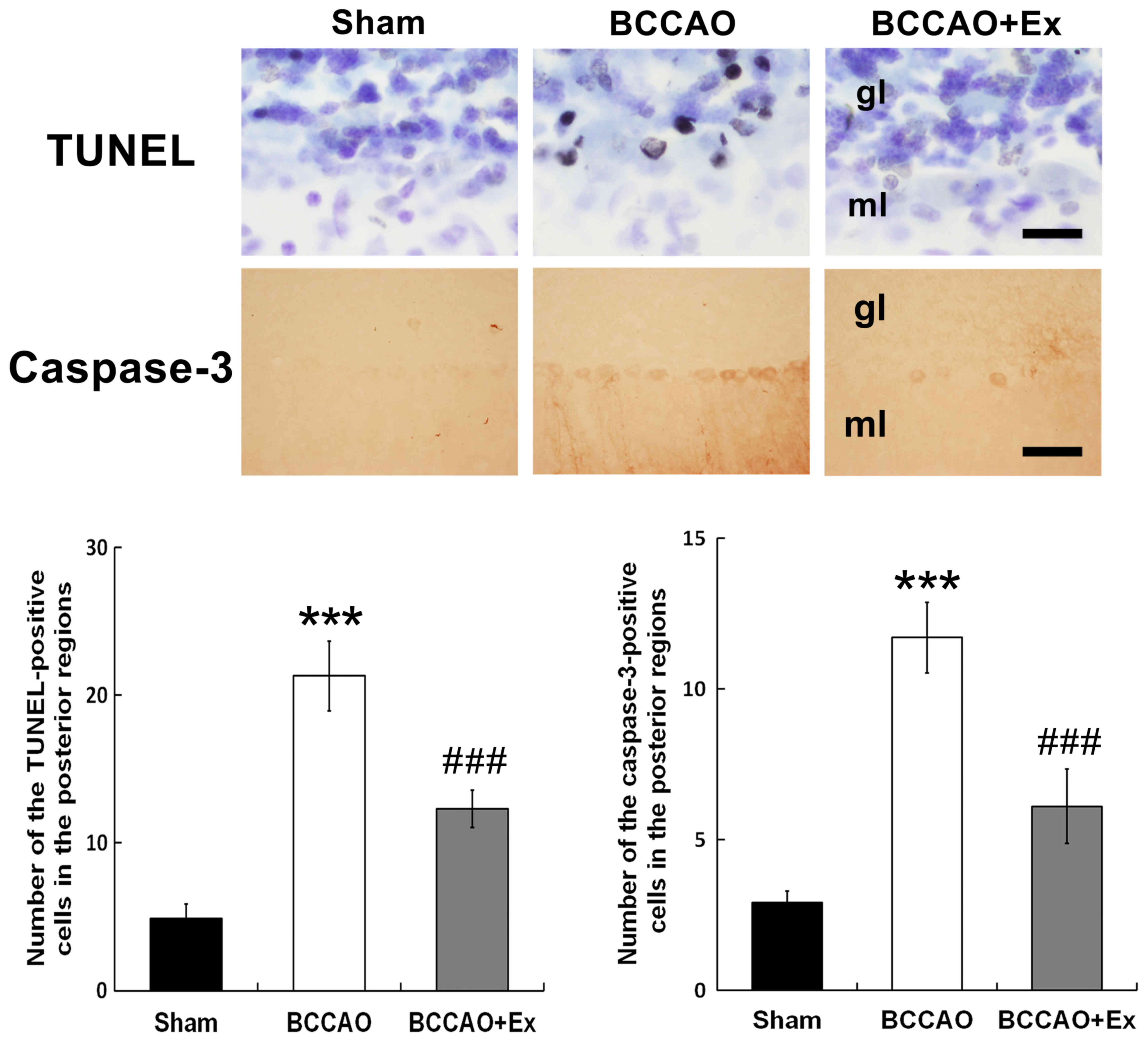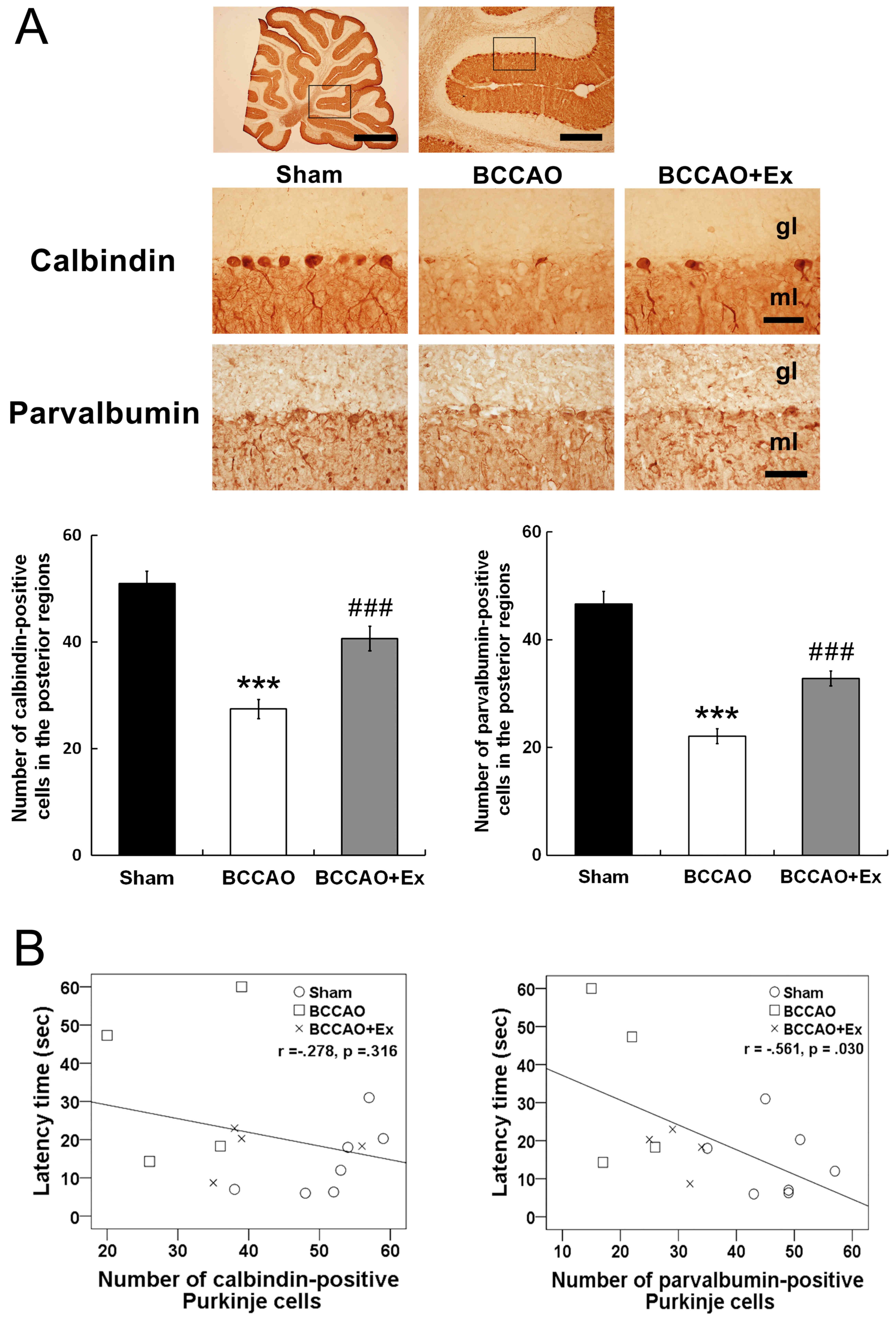|
1
|
Rochefort C, Lefort J and Rondi-Reig L:
The cerebellum: A new key structure in the navigation system. Front
Neural Circuits. 7:352013. View Article : Google Scholar : PubMed/NCBI
|
|
2
|
Taylor JA and Ivry RB: Cerebellar and
prefrontal cortex contributions to adaptation, strategies, and
reinforcement learning. Prog Brain Res. 210:217–253. 2014.
View Article : Google Scholar : PubMed/NCBI
|
|
3
|
Yu W and Krook-Magnuson E: Cognitive
collaborations: Bidirectional functional connectivity between the
cerebellum and the hippocampus. Front Syst Neurosci. 9:1772015.
View Article : Google Scholar : PubMed/NCBI
|
|
4
|
Onuki Y, Van Someren EJ, De Zeeuw CI and
Van der Werf YD: Hippocampal-cerebellar interaction during
spatio-temporal prediction. Cereb Cortex. 25:313–321. 2015.
View Article : Google Scholar : PubMed/NCBI
|
|
5
|
Lalonde R and Botez MI: The cerebellum and
learning processes in animals. Brain Res Brain Res Rev. 15:325–332.
1990. View Article : Google Scholar : PubMed/NCBI
|
|
6
|
Stoodley CJ and Schmahmann JD: Functional
topography in the human cerebellum: A meta-analysis of neuroimaging
studies. Neuroimage. 44:489–501. 2009. View Article : Google Scholar : PubMed/NCBI
|
|
7
|
Burguière E, Arleo A, Hojjati Mr, Elgersma
Y, De Zeeuw CI, Berthoz A and Rondi-Reig L: Spatial navigation
impairment in mice lacking cerebellar LTD: A motor adaptation
deficit? Nat Neurosci. 8:1292–1294. 2005. View Article : Google Scholar : PubMed/NCBI
|
|
8
|
Tomlinson SP, Davis NJ, Morgan HM and
Bracewell RM: Cerebellar contributions to spatial memory. Neurosci
Lett. 578:182–186. 2014. View Article : Google Scholar : PubMed/NCBI
|
|
9
|
Martin LA, Goldowitz D and Mittleman G:
The cerebellum and spatial ability: Dissection of motor and
cognitive components with a mouse model system. Eur J Neurosci.
18:2002–2010. 2003. View Article : Google Scholar : PubMed/NCBI
|
|
10
|
Zhao S, Chen N, Yang Z, Huang L, Zhu Y,
Guan S, Chen Q and Wang JH: Ischemia deteriorates the spike
encoding of rat cerebellar Purkinje cells by raising intracellular
Ca2+. Biochem Biophys Res Commun. 366:401–407. 2008. View Article : Google Scholar : PubMed/NCBI
|
|
11
|
Kelley MH, Taguchi N, Ardeshiri A, Kuroiwa
M, Hurn PD, Traystman RJ and Herson PS: Ischemic insult to
cerebellar Purkinje cells causes diminished GABAA receptor function
and allopregnanolone neuroprotection is associated with GABAA
receptor stabilization. J Neurochem. 107:668–678. 2008. View Article : Google Scholar : PubMed/NCBI
|
|
12
|
Welsh JP, Yuen G, Placantonakis DG, Vu TQ,
Haiss F, O'Hearn E, Molliver ME and Aicher SA: Why do purkinje
cells die so easily after global brain ischemia? Aldolase C, EAAT4,
and the cerebellar contribution to posthypoxic myoclonus. Adv
Neurol. 89:331–359. 2002.PubMed/NCBI
|
|
13
|
Román GC, Erkinjuntti T, Wallin A, Pantoni
L and Chui HC: Subcortical ischaemic vascular dementia. Lancet
Neurol. 1:426–436. 2002. View Article : Google Scholar : PubMed/NCBI
|
|
14
|
O'Brien JT, Erkinjuntti T, Reisberg B,
Roman G, Sawada T, Pantoni L, Bowler JV, Ballard C, DeCarli C,
Gorelick PB, et al: Vascular cognitive impairment. Lancet Neurol.
2:89–98. 2003. View Article : Google Scholar : PubMed/NCBI
|
|
15
|
Kalaria RN, Maestre GE, Arizaga R,
Friedland RP, Galasko D, Hall K, Luchsinger JA, Ogunniyi A, Perry
EK, Potocnik F, et al: Alzheimer's disease and vascular dementia in
developing countries: Prevalence, management, and risk factors.
Lancet Neurol. 7:812–826. 2008. View Article : Google Scholar : PubMed/NCBI
|
|
16
|
Schmidt-Kastner R, Aguirre-Chen C, Saul I,
Yick L, Hamasaki D, Busto R and Ginsberg MD: Astrocytes react to
oligemia in the forebrain induced by chronic bilateral common
carotid artery occlusion in rats. Brain Res. 1052:28–39. 2005.
View Article : Google Scholar : PubMed/NCBI
|
|
17
|
Jing Z, Shi C, Zhu L, Xiang Y, Chen P,
Xiong Z, Li W, Ruan Y and Huang L: Chronic cerebral hypoperfusion
induces vascular plasticity and hemodynamics but also neuronal
degeneration and cognitive impairment. J Cereb Blood Flow Metab.
35:1249–1259. 2015. View Article : Google Scholar : PubMed/NCBI
|
|
18
|
Kim SK, Cho KO and Kim SY: White matter
damage and hippocampal neurodegeneration induced by permanent
bilateral occlusion of common carotid artery in the rat: Comparison
between Wistar and Sprague-Dawley strain. Korean J Physiol
Pharmacol. 12:89–94. 2008. View Article : Google Scholar : PubMed/NCBI
|
|
19
|
Hai J, Wan JF, Lin Q, Wang F, Zhang L, Li
H, Zhang L, Chen YY and Lu Y: Cognitive dysfunction induced by
chronic cerebral hypoperfusion in a rat model associated with
arteriovenous malformations. Brain Res. 1301:80–88. 2009.
View Article : Google Scholar : PubMed/NCBI
|
|
20
|
Baek SS and Kim SH: Treadmill exercise
ameliorates symptoms of Alzheimer disease through suppressing
microglial activation-induced apoptosis in rats. J Exerc Rehabil.
12:526–534. 2016. View Article : Google Scholar : PubMed/NCBI
|
|
21
|
Heo YM, Shin MS, Kim SH, Kim TW, Baek SB
and Baek SS: Treadmill exercise ameliorates disturbance of spatial
learning ability in scopolamine-induced amnesia rats. J Exerc
Rehabil. 10:155–161. 2014. View Article : Google Scholar : PubMed/NCBI
|
|
22
|
Seo TB, Kim BK, Ko IG, Kim DH, Shin MS,
Kim CJ, Yoon JH and Kim H: Effect of treadmill exercise on Purkinje
cell loss and astrocytic reaction in the cerebellum after traumatic
brain injury. Neurosci Lett. 481:178–182. 2010. View Article : Google Scholar : PubMed/NCBI
|
|
23
|
Larsen JO, Skalicky M and Viidik A: Does
long-term physical exercise counteract age-related Purkinje cell
loss? A stereological study of rat cerebellum. J Comp Neurol.
428:213–222. 2000. View Article : Google Scholar : PubMed/NCBI
|
|
24
|
National Research Council: Guide for the
care and use of laboratory animals. National Academies Press;
Washington DC: 2010
|
|
25
|
Shin MS, Park SS, Lee JM, Kim TW and Kim
YP: Treadmill exercise improves depression-like symptoms by
enhancing serotonergic function through upregulation of 5-HT1A
expression in the olfactory bulbectomized rats. J Exerc Rehabil.
13:36–42. 2017. View Article : Google Scholar : PubMed/NCBI
|
|
26
|
Zhang Y, Cao RY, Jia X, Li Q, Qiao L, Yan
G and Yang J: Treadmill exercise promotes neuroprotection against
cerebral ischemia-reperfusion injury via downregulation of
pro-inflammatory mediators. Neuropsychiatr Dis Treat. 12:3161–3173.
2016. View Article : Google Scholar : PubMed/NCBI
|
|
27
|
Cho YS, Shin MS, Ko IG, Kim SE, Kim CJ,
Sung YH, Yoon HS and Lee BJ: Ulinastatin inhibits cerebral
ischemia-induced apoptosis in the hippocampus of gerbils. Mol Med
Rep. 12:1796–1802. 2015. View Article : Google Scholar : PubMed/NCBI
|
|
28
|
Shin MS, Ko IG, Kim SE, Kim BK, Kim TS,
Lee SH, Hwang DS, Kim CJ, Park JK and Lim BV: Treadmill exercise
ameliorates symptoms of methimazole-induced hypothyroidism through
enhancing neurogenesis and suppressing apoptosis in the hippocampus
of rat pups. Int J Dev Neurosci. 31:214–223. 2013. View Article : Google Scholar : PubMed/NCBI
|
|
29
|
Celio MR: Calbindin D-28k and parvalbumin
in the rat nervous system. Neuroscience. 35:375–475. 1990.
View Article : Google Scholar : PubMed/NCBI
|
|
30
|
Cotman CW and Berchtold NC: Exercise: A
behavioral intervention to enhance brain health and plasticity.
Trends Neurosci. 25:295–301. 2002. View Article : Google Scholar : PubMed/NCBI
|
|
31
|
Lee JM, Park JM, Song MK, Oh YJ, Kim CJ
and Kim YJ: The ameliorative effects of exercise on cognitive
impairment and white matter injury from blood-brain barrier
disruption induced by chronic cerebral hypoperfusion in adolescent
rats. Neurosci Lett. 638:83–89. 2017. View Article : Google Scholar : PubMed/NCBI
|
|
32
|
Schefer V and Talan MI: Oxygen consumption
in adult and Aged C57Bl/6J mice during acute treadmill exercise of
different intensity. Exp Gerontol. 31:387–392. 1996. View Article : Google Scholar : PubMed/NCBI
|
|
33
|
Kwon SJ, Park JS, Park SY, Song KS, Jung
ST, Jung SB, Park IR, Choi WS and Kwon SO: Low-intensity treadmill
exercise and/or bright light promote neurogenesis in adult rat
brain. Neural Regen Res. 8:922–929. 2013.PubMed/NCBI
|
|
34
|
Shimada H, Hamakawa M, Ishida A, Tamakoshi
K, Nakashima H and Ishida K: Low-speed treadmill running exercise
improves memory function after transient middle cerebral artery
occlusion in rats. Behav Brain Res. 243:21–27. 2013. View Article : Google Scholar : PubMed/NCBI
|
|
35
|
Alaei H, Moloudi R and Sarkaki AR: Effects
of treadmill running on mid-term memory and swim speed in the rat
with Morris water maze test. J Bodyw Mov Ther. 12:72–75. 2008.
View Article : Google Scholar : PubMed/NCBI
|
|
36
|
Sim YJ: Treadmill exercise alleviates
impairment of spatial learning ability through enhancing cell
proliferation in the streptozotocin-induced Alzheimer's disease
rats. J Exerc Rehabil. 10:81–88. 2014. View Article : Google Scholar : PubMed/NCBI
|
|
37
|
Liddelow SA, Guttenplan KA, Clarke LE,
Bennett FC, Bohlen CJ, Schirmer L, Bennett ML, Münch AE, Chung WS,
Peterson TC, et al: Neurotoxic reactive astrocytes are induced by
activated microglia. Nature. 541:481–487. 2017. View Article : Google Scholar : PubMed/NCBI
|
|
38
|
Kim M, Shin MS, Lee JM, Cho HS, Kim CJ,
Kim YJ, Choi HR and Jeon JW: Inhibitory effects of isoquinoline
alkaloid berberine on ischemia-induced apoptosis via activation of
phosphoinositide 3-kinase/protein kinase B signaling pathway. Int
Neurourol J. 18:115–125. 2014. View Article : Google Scholar : PubMed/NCBI
|
|
39
|
Bruce AJ, Boling W, Kindy MS, Peschon J,
Kraemer PJ, Carpenter MK, Holtsberg FW and Mattson MP: Altered
neuronal and microglial responses to excitotoxic and ischemic brain
injury in mice lacking TNF receptors. Nat Med. 2:788–794. 1996.
View Article : Google Scholar : PubMed/NCBI
|
|
40
|
Vilhardt F: Microglia: Phagocyte and glia
cell. Int J Biochem Cell Biol. 37:17–21. 2005. View Article : Google Scholar : PubMed/NCBI
|
|
41
|
Cho HS, Kim TW, Ji ES, Park HS, Shin MS
and Baek SS: Treadmill exercise ameliorates motor dysfunction
through inhibition of Purkinje cell loss in cerebellum of valproic
acid-induced autistic rats. J Exerc Rehabil. 12:293–298. 2016.
View Article : Google Scholar : PubMed/NCBI
|
|
42
|
Lee JM, Shin MS, Ji ES, Kim TW, Cho HS,
Kim CJ, Jang MS, Kim TW, Kim BK and Kim DH: Treadmill exercise
improves motor coordination through ameliorating Purkinje cell loss
in amyloid beta23-35-induced Alzheimer's disease rats. J Exerc
Rehabil. 10:258–264. 2014. View Article : Google Scholar : PubMed/NCBI
|
|
43
|
Seo TB, Kim TW, Shin MS, Ji ES, Cho HS,
Lee JM, Kim TW and Kim CJ: Aerobic exercise alleviates
ischemia-induced memory impairment by enhancing cell proliferation
and suppressing neuronal apoptosis in hippocampus. Int Neurourol J.
18:187–197. 2014. View Article : Google Scholar : PubMed/NCBI
|
|
44
|
Marques-Aleixo I, Santos-Alves E, Balça
MM, Rizo-Roca D, Moreira PI, Oliveira PJ, Magalhães J and Ascensão
A: Physical exercise improves brain cortex and cerebellum
mitochondrial bioenergetics and alters apoptotic, dynamic and
auto(mito)phagy markers. Neuroscience. 301:480–495. 2015.
View Article : Google Scholar : PubMed/NCBI
|
|
45
|
Kim JE, Shin MS, Seo TB, Ji ES, Baek SS,
Lee SJ, Park JK and Kim CJ: Treadmill exercise ameliorates motor
disturbance through inhibition of apoptosis in the cerebellum of
valproic acid-induced autistic rat pups. Mol Med Rep. 8:327–334.
2013. View Article : Google Scholar : PubMed/NCBI
|
|
46
|
Kántor O, Schmitz C, Feiser J, Brasnjevic
I, Korr H, Busto R, Ginsberg MD and Schmidt-Kastner R: Moderate
loss of cerebellar Purkinje cells after chronic bilateral common
carotid artery occlusion in rats. Acta Neuropathol. 113:549–558.
2007. View Article : Google Scholar : PubMed/NCBI
|
|
47
|
Meng Y, Li WZ, Shi YW, Zhou BF, Ma R and
Li WP: Danshensu protects against ischemia/reperfusion injury and
inhibits the apoptosis of H9c2 cells by reducing the calcium
overload through the p-JNK-NF-κB-TRPC6 pathway. Int J Mol Med.
37:258–266. 2016. View Article : Google Scholar : PubMed/NCBI
|
|
48
|
Barski JJ, Hartmann J, Rose CR, Hoebeek F,
Mörl K, Noll-Hussong M, De Zeeuw CI, Konnerth A and Meyer M:
Calbindin in cerebellar Purkinje cells is a critical determinant of
the precision of motor coordination. J Neurosci. 23:3469–3477.
2003. View Article : Google Scholar : PubMed/NCBI
|
|
49
|
Gandhi CC, Kelly RM, Wiley RG and Walsh
TJ: Impaired acquisition of a Morris water maze task following
selective destruction of cerebellar purkinje cells with
OX7-saporin. Behav Brain Res. 109:37–47. 2000. View Article : Google Scholar : PubMed/NCBI
|


















